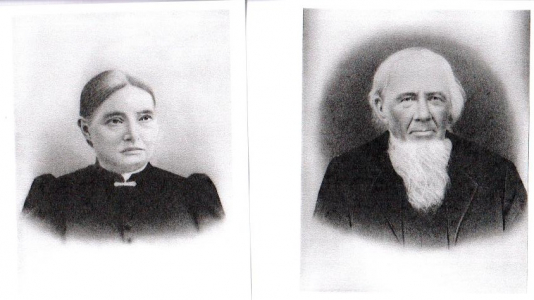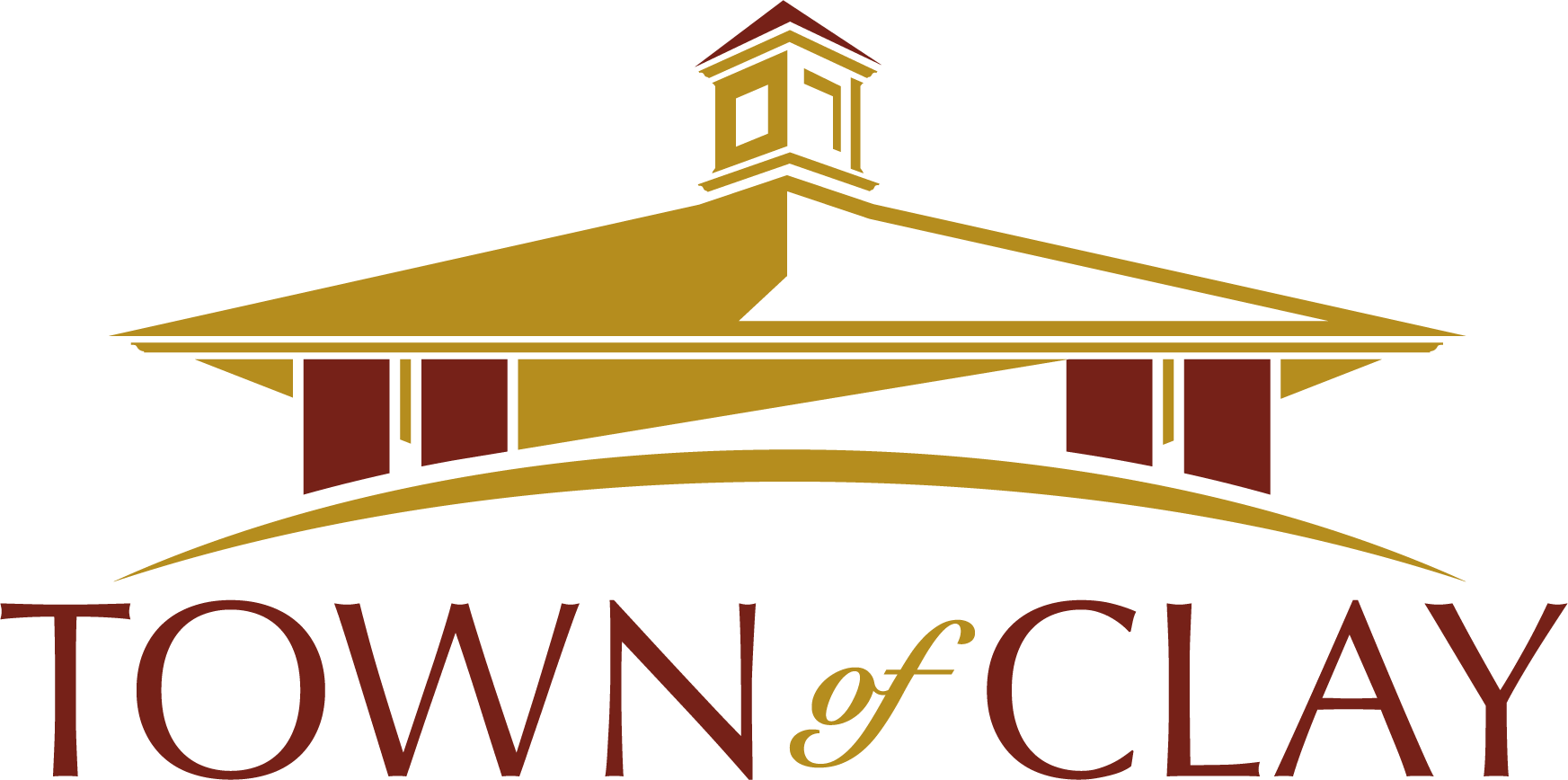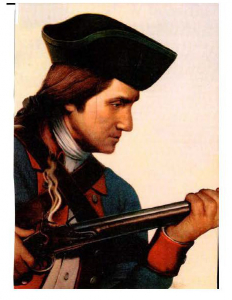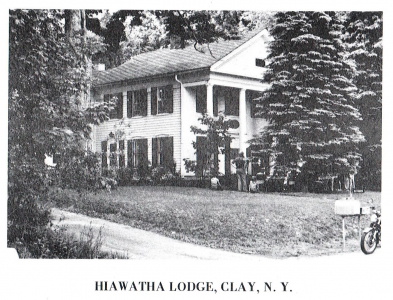Clay Country CraftersPosted on March 29, 2021 |
Image

|
HISTORY MYSTERY: Clay Country Crafters
Thirty years ago on March 11, 1991, the Clay Country Crafters held their first class and meeting. It all started with two women who loved history and Clay discussing at a church coffee hour, “how could we bring to the women (and men) of Clay our love for the old world crafts of long ago? Both had made many crafts and had contacts with instructors. They were Roba Haibt, who knew how to apply for grants and Dorothy Heller, who had education in marketing. The first step was to apply for a grant from the Cultural Resource Council of Onondaga County for funds for materials which they received with the first craft to be ceramic canal boats like the boats used here in the canal. Their initial goal was to supply a historical museum gift shop. The Town of Clay was working on obtaining a historic museum. Next they advertised in the local newspaper for others interested in the project; and, of course, used word of mouth. The first meeting was at Immanuel Lutheran Church, who sponsored the project. The first officers were: Roba Haibt, President; Dorothy Heller, Vice President and program chairman; and Kathy Moore, Secretary/Treasurer.
At their second meeting which was held at 7:00 p.m. at the Grange Hall on Grange Road, they made wooden lawn sheep. It was made from a wooded sheep shape with painted head and feet and artificial sheep skin body. Metal rods stationed it in the ground. They were all over Clay front yards signifying they were made by Clay Country Crafters! Sheep were a major farm animal for the earliest Clay settlers and for many years after. Celebrating their first anniversary in March, 1992, they completed as their first major project, a signature quilt, each member completing a block. A thank you to Edith Kisselburgh for instruction on assembling the quilt which is still hanging in Immanuel Lutheran Church where most of the work on it was done. Some other Colonial crafts the group was instructed in were chair caning, candle wicking, tole painting, crocheting, grapevine wreath making and small doll making.
Their activities included planning for the Historic Clay Quilt which they constructed as their major project. Also, they demonstrated and sold their old world crafts at the Town Easter Egg Hunts and Christmas tree lighting ceremonies for years. The second year they started growing the broom corn to be used to make homemade brooms which was taught by Walt Thomas who a famous broom maker was demonstrating at the State Fair. Dwayne Champion instructed them in farming and grew much of the corn for them on his farm. Another State Fair demonstrator, Linda Saunders, taught the crafters how to make large baskets from scratch. To get ready for Christmas, they made several types of tree ornaments and twisted paper wreaths.
Beginning their third year, the Clay Country Crafters were recognized for their contributions to the community at a Club Recognition Day at the Liverpool Public Library. Through another grant from the Cultural Resources Council, they had been able to acquire and pay more artisans to teach and demonstrate the Old country crafts mentioned above. Some other craft accomplishments were making of mop dolls, Victorian fans. Cat neck pillows, painting of wooden decorations for various holidays, Victorian fabric picture frames, broom dolls child’s berry baskets, Victorian fabric baskets, decorated straw hats, broom dolls, and Corn husk dolls. Shirley Lepoyski taught reed basket making; Donna Supensky taught plastic canvas mug rugs; and Lucille Snizek taught constructing Carolina reed snowflakes.
The person who had the original idea to found the Clay Country Crafters, Roba Haibt, passed away on December 20, 1993 and Edith Kisselburgh, who demonstrated and instructed the group in the art of quilting, passed away on March 31, 1994. The group decided to continue on their project to construct an Historic Clay Quilt, depicting the scenes of Clay’s history. Reviewing old photos, newspaper articles, and “Welcome to Clay” Book, ideas were accumulated. A member of the group, Rosemary Butkins with artistic ability, made paper patterns of each block for the quilters to use. Ceil Rosenthal, a well-known quilter, was contacted to lead the group in laying out the design. A grant for supplies was obtained from the Town of Clay. Many donations of supplies were received, and many volunteers came forward to help. At the quilt layout meeting, Ceil Rosenthal suggested we have the layout be a continuous format – each block connecting graphically into the blocks abutting it. The patterns were handed out along with the fabric that would be best for each block. The long construction began!
Meanwhile, the work on the proposed Clay Historic Park continued. Merle Melvin had donated land on Route 31 next to Immanuel Church, Don Sotherden had donated the old Railroad station on Route 31 for use as a museum. It was moved to the property from across the tracks with help from the town. The Clay Historical Association members refurbished the inside. Others who were instrumental were: Pat DiDomenico; former Town Supervisor; Dave Palmer; former Town Board Member; Bud Lepinske, former Town Historian; and Lucile Sotherden. Of course, Roba Haibt and Dorothy Heller had been behind the scenes!
A grant was obtained from the Cultural Resource Council for a specially made wooden frame for the quilt. The actual quilting was done on a 100 year-old quilting frame donated by Jim Bettinger. On September 29, 1996 at 2:00 p.m., the Clay Country Crafters dedicated the quilt to the Town of Clay at the newly refurbished Railroad Station in the Clay Historic Park location. A slide presentation and refreshments followed at Immanuel Church, right next door. A newly printed booklet by Dorothy Heller was available entitled, “Clay History through a Quilt” made possible through donations from Minuteman Press, Rebecca Hoffman-Photographer and Fran Fiorito-owner of The Euclid Restaurant. The quilt presently hangs in the Welcome Center in the Clay Historic Park.
Dorothy Heller, Historian
3-29-21
Other
History Mysteries

Wellers of Dutch Settlement
History Mystery | Jul 16, 2021
HISTORY MYSTERY: Wellers of Dutch Settlement


